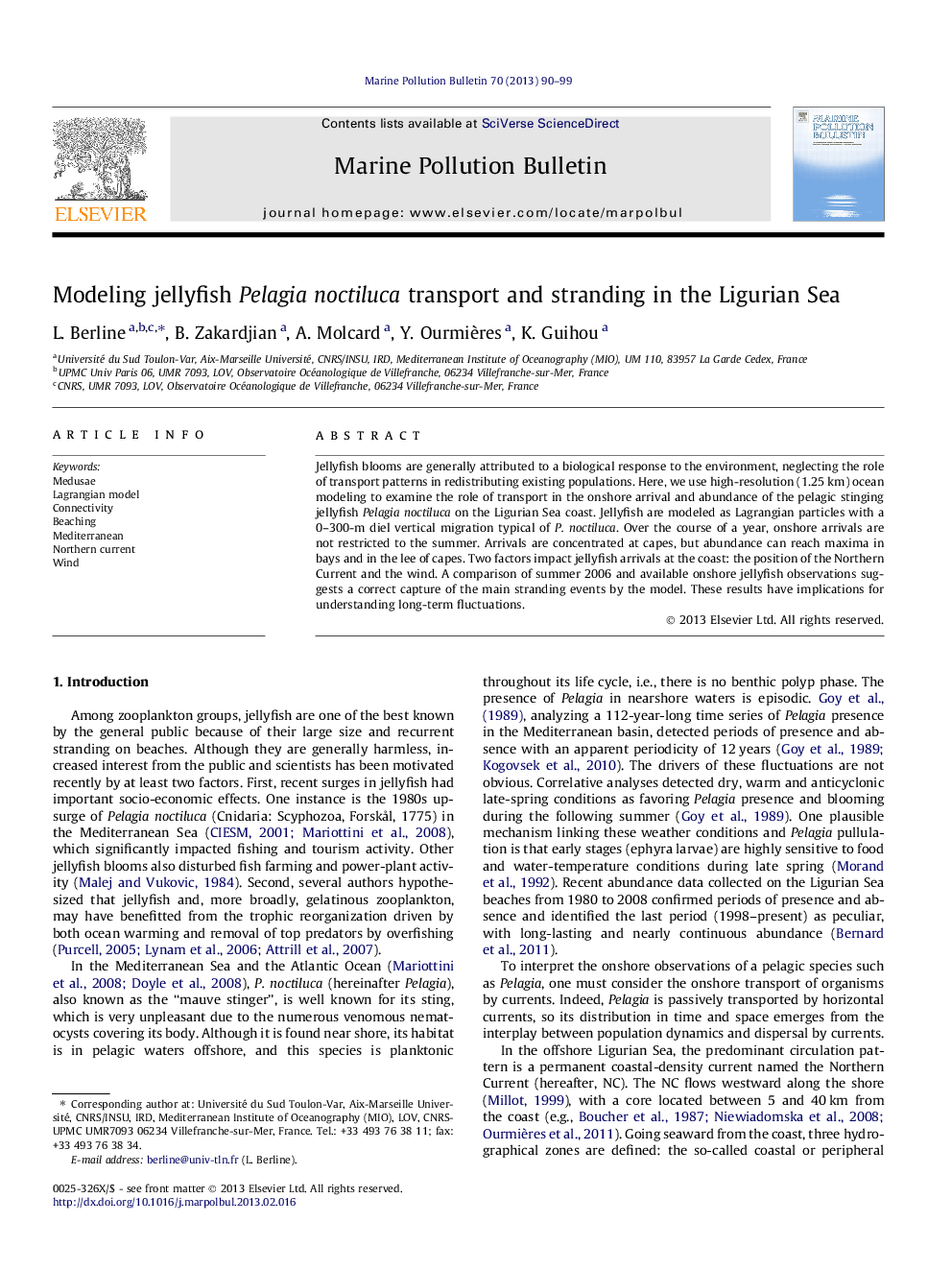| Article ID | Journal | Published Year | Pages | File Type |
|---|---|---|---|---|
| 6359892 | Marine Pollution Bulletin | 2013 | 10 Pages |
Jellyfish blooms are generally attributed to a biological response to the environment, neglecting the role of transport patterns in redistributing existing populations. Here, we use high-resolution (1.25Â km) ocean modeling to examine the role of transport in the onshore arrival and abundance of the pelagic stinging jellyfish Pelagia noctiluca on the Ligurian Sea coast. Jellyfish are modeled as Lagrangian particles with a 0-300-m diel vertical migration typical of P. noctiluca. Over the course of a year, onshore arrivals are not restricted to the summer. Arrivals are concentrated at capes, but abundance can reach maxima in bays and in the lee of capes. Two factors impact jellyfish arrivals at the coast: the position of the Northern Current and the wind. A comparison of summer 2006 and available onshore jellyfish observations suggests a correct capture of the main stranding events by the model. These results have implications for understanding long-term fluctuations.
⺠In the Ligurian Sea, jellyfish onshore arrivals are concentrated at capes. ⺠Abundance can reach maxima in bays and in the lee of capes. ⺠Jellyfish arrivals at the coast depend on the position of the Northern Current and the wind. ⺠These results have implications for understanding long term fluctuations onshore.
